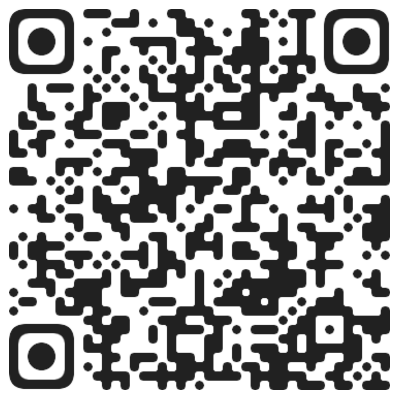Highlights

-
Novelty
The theme of Challenge 2025 centers around Towards Generalizable Embodied Systems one step further.
It covers a wide spectrum of topics, such as the world model, the end-to-end 2.0 paradigm, etc., in the applications of robotics and autonomous driving. -
Prize
A total cash pool of up to USD 100,000.
-
Travel Grant
USD 1,500 travel grant for each selected team from all tracks.
For eligibility for the travel grant, please refer to the general rules.
Contact

-
 Contact us via
Contact us via [email protected] -
 Join Discord to chat with the Challenge organizers
Join Discord to chat with the Challenge organizers
-
 Join discussions in our WeChat group
Join discussions in our WeChat group
-
 Announcements will be made
Announcements will be made
-
in Discord
📢-challenge-information -
via
[email protected]
-
in Discord
General Rules

Eligibility
- A participant must be a team member and cannot be a member of multiple teams.
- Participants can form teams of up to 10 members.
- A team must be registered for participation.
- A team is limited to one submission account.
- A team can participate in multiple tracks.
- An entity can have multiple teams.
- Attempting to hack the test set or engaging in similar behaviors will result in disqualification.
Technical
- All publicly available datasets and pretrained weights are allowed. The use of private datasets or pretrained weights is prohibited.
- The use of future frames is prohibited except where explicitly stated.
- The use of data must be described explicitly in the technical report.
Award & Travel Grant
- Participants will receive certificates.
-
To be eligible for awards and travel grant:
- Teams must make their results public on the leaderboard before the submission deadline and continue to keep them public thereafter;
-
Teams must submit a technical report to [email protected] for each participating track, entitled with
[track]-[team name]-[method]in PDF format of at most 4 pages (excluding references); - If requested, teams must provide their code, docker image, or necessary materials to the award committee for verification;
- Organizers of a track cannot claim any award of the track. However, they can participate in other tracks since the test data is excluded from them as well.
- Innovation awards will be decided through a double-blind reviewing process on the technical reports by the award committee. Winners of Innovation awards can overlap with Outstanding Champion and Honorable Runner-up.
- Winners will be invited to present during the workshops or sibling event.
- The organizers reserve the right to update the rules in response to unforeseen circumstances in order to better serve the mission of the challenge. The organizers reserve the right to disqualify teams that have violated the rules. Organizers reserve all rights for the final explanation.
FAQ
How do we/I download the data?
For each track, we provide links for downloading data in the repository. The repository, which might also contain dataset API, baseline model, and other helpful information, is a good start to begin your participation.
How many times can we/I make a submission?
Each track has its submission limit. Please refer to the test server for each track.
Should we/I use future frames during inference?
No future frame is allowed except that it is noted explicitly in a track.
Which template of a technical report should we/I follow? How to submit the technical report?
The format of a technical report is constrained to a PDF file. We recommend using the CVPR 2025 template.
- [ CVPR 2025 ]
-
USD 3,000
 Outstanding Champion
Outstanding Champion
- [ Timeline ]
-
Submission Deadline
-
Technical Report Submission Deadline
-
Winner / Travel Grant Receiver Notification
-
Winner Presentation at Workshop on Embodied Intelligence for Autonomous Systems on the Horizon
- [ ICCV 2025 ]
-
USD 5,000
 Innovation Award
Innovation Award
-
USD 3,000
 Outstanding Champion
Outstanding Champion
- [ Timeline ]
-
Submission Deadline
-
Technical Report Submission Deadline
-
Winner / Travel Grant Receiver Notification
-
Winner Presentation at Workshop on Learning to See: Advancing Spatial Understanding for Embodied Intelligence
Test Server
![]() Hugging face
(warm-up phase) /
Hugging face
(warm-up phase) /
![]() Hugging face
Hugging face
Participate
-
 For participation in the challenge, registering for your team is a
For participation in the challenge, registering for your team is a strict requirementby filling out this Google Form. For more details, please check the general rules.
The registration information can be modified until[ICCV 2025] September 20.
Task Description
Benchmarking sensorimotor driving policies with real data is challenging due to the misalignment between open- and closed-loop metrics. The NAVSIM framework aims to address this with simulation-based metrics, by unrolling simplified bird's eye view abstractions of scenes for a short simulation horizon. Going beyond evaluating driving systems in states observed during human data collection, this year's NAVSIM v2 challenge introduces reactive background traffic participants and realistic synthetic novel view inputs to better assess robustness and generalization.
Leaderboard [ICCV]
| Rank | 🗺️ | Institution | EPDMS ▼ | Team Name |
|---|
-
 The outstanding Champion goes to team Simple with a score of 53.0582.
The outstanding Champion goes to team Simple with a score of 53.0582.
-
 Innovation Award (Shared) goes to teams bjtu_jia_team&qcraft (2nd) and NYCU_CSSP917_Lab (14th). More details are in the technical report.
Innovation Award (Shared) goes to teams bjtu_jia_team&qcraft (2nd) and NYCU_CSSP917_Lab (14th). More details are in the technical report.
Leaderboard [CVPR]
| Rank | 🗺️ | Institution | EPDMS ▼ | Team Name |
|---|
-
 The outstanding Champion goes to team NVIDIA. More details are in the technical report, presentation, and blog.
The outstanding Champion goes to team NVIDIA. More details are in the technical report, presentation, and blog.
-
 Team SNU SPA Lab receives a USD 500 travel grant. The remaining funds are reserved for the ICCV phase to support and encourage broader team participation in alignment with DEI principles.
Team SNU SPA Lab receives a USD 500 travel grant. The remaining funds are reserved for the ICCV phase to support and encourage broader team participation in alignment with DEI principles.
Contact
-
Tianyu Li (OpenDriveLab),
[email protected] -
Discord:
#🏟️-navsim-e2e-driving-2025
Citation
Please consider citing our work if the challenge helps your research with the following BibTex:
title = {Pseudo-Simulation for Autonomous Driving},
author = {Wei Cao and Marcel Hallgarten and Tianyu Li and Daniel Dauner and Xunjiang Gu and Caojun Wang and Yakov Miron and Marco Aiello and Hongyang Li and Igor Gilitschenski and Boris Ivanovic and Marco Pavone and Andreas Geiger and Kashyap Chitta},
booktitle = {Conference on Robot Learning (CoRL)},
year = {2025}
}
title = {NAVSIM: Data-Driven Non-Reactive Autonomous Vehicle Simulation and Benchmarking},
author = {Daniel Dauner and Marcel Hallgarten and Tianyu Li and Xinshuo Weng and Zhiyu Huang and Zetong Yang and Hongyang Li and Igor Gilitschenski and Boris Ivanovic and Marco Pavone and Andreas Geiger and Kashyap Chitta},
booktitle = {Advances in Neural Information Processing Systems (NeurIPS)},
year = {2024}
}
Related Material
- [ CVPR 2025 ]
-
USD 3,000
 Outstanding Champion
Outstanding Champion
- [ Timeline ]
-
Submission Deadline
-
Technical Report Submission Deadline
-
Winner / Travel Grant Receiver Notification
-
Winner Presentation at Workshop on Embodied Intelligence for Autonomous Systems on the Horizon
- [ ICCV 2025 ]
-
USD 5,000
 Innovation Award
Innovation Award
-
USD 3,000
 Outstanding Champion
Outstanding Champion
- [ Timeline ]
-
Submission Deadline
-
Technical Report Submission Deadline
-
Winner / Travel Grant Receiver Notification
-
Winner Presentation at Workshop on Learning to See: Advancing Spatial Understanding for Embodied Intelligence
Test Server
Participate
-
 For participation in the challenge, registering for your team is a
For participation in the challenge, registering for your team is a strict requirementby filling out this Google Form. For more details, please check the general rules.
The registration information can be modified until[ICCV 2025] September 20.
Task Description
A world model is a computer program that can imagine how the world evolves in response to an agent's behavior. It has the potential to solve general-purpose simulation and evaluation, enabling robots that are safe, reliable, and intelligent in a wide variety of scenarios. To help accelerate progress towards solving world models for robotics, our challenge invites participants to develop a robot world model that can accurately simulate the future interactions of humanoid robots with their surroundings based on past observations and agent actions. Participants will demonstrate the compression rate, efficiency, and evaluation ability of their approaches.
Leaderboard [ICCV]
| Rank | 🗺️ | Institution | Total Point ▼ | Compression | Sampling | Team Name |
|---|
-
 The outstanding Champion goes to team Revontuli with a total score of 20.00 points.
The outstanding Champion goes to team Revontuli with a total score of 20.00 points.
-
 Innovation Award goes to team Revontuli (also the Champion).
Innovation Award goes to team Revontuli (also the Champion).
Leaderboard [CVPR]
| Rank | 🗺️ | Institution | Total Point ▼ | Compression | Sampling | Team Name |
|---|
-
 The outstanding Champion goes to team Duke. More details are in the technical report and presentation.
The outstanding Champion goes to team Duke. More details are in the technical report and presentation.
-
 Team Shortnapse receives a USD 500 travel grant. The remaining funds are reserved for the ICCV phase to support and encourage broader team participation in alignment with DEI principles.
Team Shortnapse receives a USD 500 travel grant. The remaining funds are reserved for the ICCV phase to support and encourage broader team participation in alignment with DEI principles.
Contact
-
Daniel Ho (1X),
[email protected] -
Jack Monas (1X),
[email protected] - Discord
Related Material
-
[ IROS 2025 ]
As the final round will take place on-site, no innovation award will be presented in this challenge.
-
USD 10,000
 First Prize
First Prize
-
USD 5,000
 Second Prize
Second Prize
-
USD 3,000
 Third Prize
Third Prize
- [ Timeline ]
-
Challenge Start & Online Tutorial
-
Submission Deadline
-
Travel Grant Receiver Notification
-
On-site Competition & Winner Presentation at IROS 2025, Hangzhou, China
Test Server
For more details, please refer to the challenge webpage. Please be noted that the content is identical to this webpage.
Participate
-
 For participation in the challenge, registering for your team is a
For participation in the challenge, registering for your team is a strict requirementby filling out this Google Form.
The registration information can be modified untilSep. 01.
Task Description
Track 1 - Manipulation
This track is designed to assess the manipulation capabilities of models, comprising both online and onsite phases. Participants will train robotic manipulation models using the publicly available dataset from AgiBot World, ensuring stable performance in both simulated and real-world environments, and efficiently completing a variety of manipulation tasks.
- Includes 10 tasks, spanning easy, medium, and hard levels, with progressively increasing difficulty.
- Covers dual-arm collaboration, long-horizon tasks, and precise manipulations, such as opening drawers to place items, pouring water, packing moving objects, etc., comprehensively evaluating the models' operational capabilities.
- Scenarios include multiple domains like home, supermarket, and industry.
Track 2 - World Model
This track focuses on evaluating the generative capabilities of models in the field of embodied intelligence, with only an online phase being set. Participants will tackle a core challenge: given a robot's action sequence and initial sensor image, predict how the robot's visual perspective evolves during task execution.
- The test cases comprise over 30 distinct action sequences paired with initial images sampled from 10 different manipulation tasks, covering diverse real-world scenarios including kitchen environments, workbenches, dining tables, and bathroom settings.
- The training and testing datasets incorporate diverse robot-object interactions (e.g., collisions, grasping, placement, and dragging maneuvers), comprising both successful expert demonstrations and imperfect execution trajectories containing various failure modes.
- Each training sample consists of a head-view video captured at 30 FPS, synchronized action sequences, and corresponding camera intrinsic/extrinsic parameters. The generation target is action-aligned videos at 5 FPS. You may design the data sampling strategy accordingly.
Contact
[email protected]
[email protected]
-
Discord:
#🤖-agibot-world-challenge
Citation
Please consider citing our work if the challenge helps your research with the following BibTex:
title = {AgiBot World Colosseo: A Large-scale Manipulation Platform for Scalable and Intelligent Embodied Systems},
author = {AgiBot-World-Contributors and Bu, Qingwen and Cai, Jisong and Chen, Li and Cui, Xiuqi and Ding, Yan and Feng, Siyuan and Gao, Shenyuan and He, Xindong and Hu, Xuan and Huang, Xu and Jiang, Shu and Jiang, Yuxin and Jing, Cheng and Li, Hongyang and Li, Jialu and Liu, Chiming and Liu, Yi and Lu, Yuxiang and Luo, Jianlan and Luo, Ping and Mu, Yao and Niu, Yuehan and Pan, Yixuan and Pang, Jiangmiao and Qiao, Yu and Ren, Guanghui and Ruan, Cheng and Shan, Jiaqi and Shen, Yongjian and Shi, Chengshi and Shi, Mingkang and Shi, Modi and Sima, Chonghao and Song, Jianheng and Wang, Huijie and Wang, Wenhao and Wei, Dafeng and Xie, Chengen and Xu, Guo and Yan, Junchi and Yang, Cunbiao and Yang, Lei and Yang, Shukai and Yao, Maoqing and Zeng, Jia and Zhang, Chi and Zhang, Qinglin and Zhao, Bin and Zhao, Chengyue and Zhao, Jiaqi and Zhu, Jianchao},
journal = {arXiv},
volume = {2503.06669},
year = {2025}
}
Organizers

General
| - | Huijie Wang | OpenDriveLab |
| - | Yihang Qiu | The University of Hong Kong |
| - | Tianyu Li | OpenDriveLab |
| - | Qingwen Bu | OpenDriveLab |
NAVSIM v2 End-to-End Driving Challenge
| - | Marcel Hallgarten | University of Tübingen |
| - | Kashyap Chitta | University of Tübingen |
| - | Daniel Dauner | University of Tübingen |
| - | Tianyu Li | OpenDriveLab |
| - | Wei Cao | Bosch |
| - | Pat Karnchanachari | Motional |
World Model Challenge by 1X
| - | Eric Jang | 1X |
| - | Jack Monas | 1X |
| - | Daniel Ho | 1X |
AgiBot World Challenge
| - | Maoqing Yao | AgiBot |
| - | Hongyang Li | The University of Hong Kong |
| - | Huijie Wang | OpenDriveLab |
| - | Chengyue Zhao | AgiBot |
| - | Shukai Yang | AgiBot |
| - | Jianlan Luo | AgiBot |
| - | Shijia Peng | OpenDriveLab |
| - | Liliang Chen | AgiBot |
| - | Jin Chen | OpenDriveLab |








